Heraldic Personal Badge
From Wikipedia:
A heraldic badge is not a part of an armiger’s achievement of arms, but it is granted by the same body.
The badge is designed to be used by the supporters of an armiger. A mediaeval knight would be granted arms by letter patent, but his supporters or followers would not be allowed to display that achievement, instead they would use a badge to help identify themselves to each other and to other people.
Today, many English towns and cities have an achievement of arms. Usually the mayor and council are the only ones allowed to used the full coat of arms. The departments of the council use a badge, and it is the badge which is painted on council vehicles etc. to identify them.
A heraldic badge, emblem, impresa, device, or personal device worn as a badge indicates allegiance to, or the property of, an individual, family or corporate body. Medieval forms are usually called a livery badge, and also a cognizance. They are para-heraldic, not necessarily using elements from the coat of arms of the person or family they represent, though many do, often taking the crest or supporters. Their use is more flexible than that of arms proper.
Badges worn on clothing were common in the late Middle Ages, particularly in England. They could be made of base metal, cloth or other materials and worn on the clothing of the followers of the person in question; grander forms would be worn by important persons, with the Dunstable Swan Jewel in enamelled gold a rare survivor. Livery collars were also given to important persons, often with the badge as a pendant. The badge would also be embroidered or appliqued on standards, horse trappings, livery uniforms, and other belongings. Many medieval badges survive in English pub names.
Badges occasionally imitated a charge in the bearer’s coat of arms, or had a more or less direct reference to such a charge. More often, badges commemorated some remarkable exploit, illustrated a family or feudal alliance, or indicated some territorial rights or pretensions. Some badges are rebuses, making a pun or play-on-words of the owner’s name. It was not uncommon for the same personage or family to use more than one badge; and, on the other hand, two or more badges were often borne in combination, to form a single compound device.
The personal badge I designed for myself included a Pangolin – the most illegally trafficked harmless (or otherwise) animal in the world.
Blazon: Argent, a Temminck’s Pangolin [Smutsia temminckii] intortant proper, within a broad circular scroll Azure, fimbriated Or, with the motto Melior Nullo Nullus Melior inscribed upon it around. All placed on an olive wreath Vert and ensigned above with an American coronet proper of eight mullets, five visible, alternate Argent and Or.
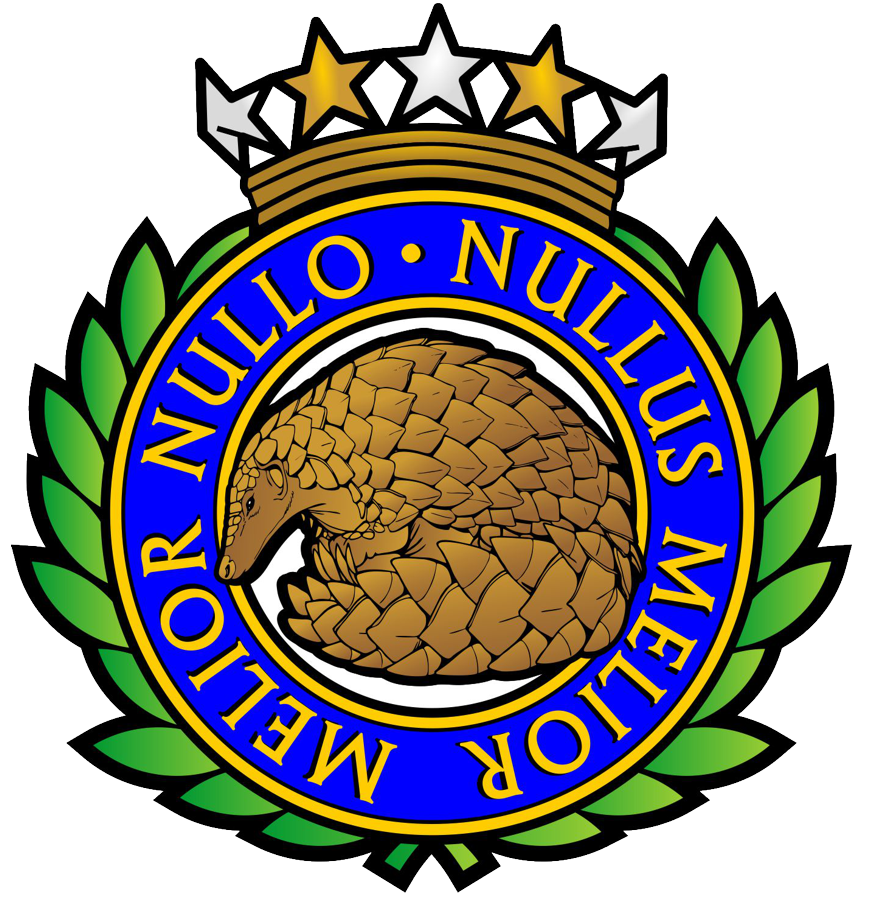
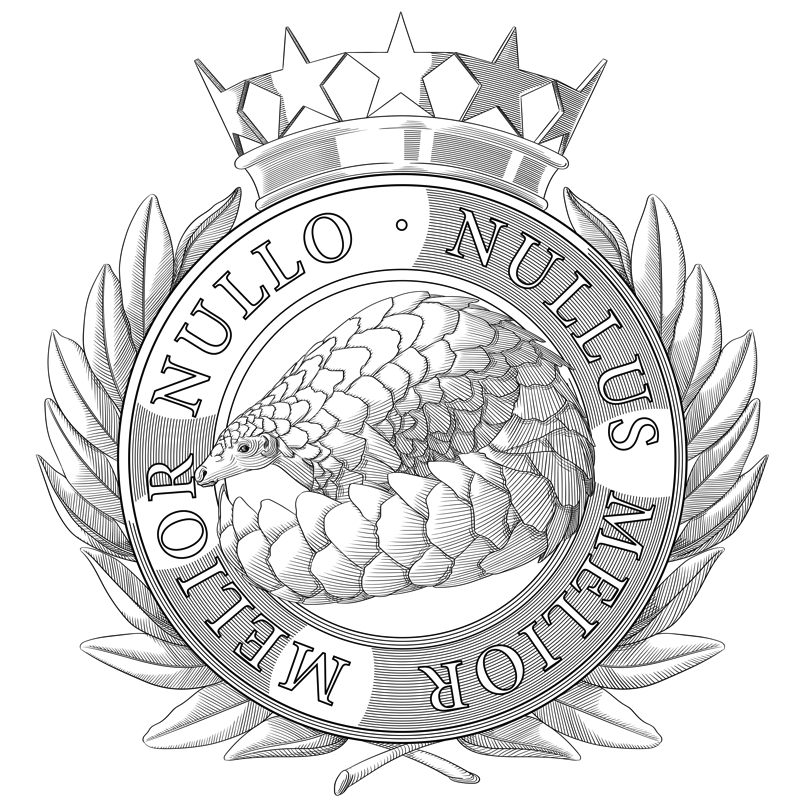

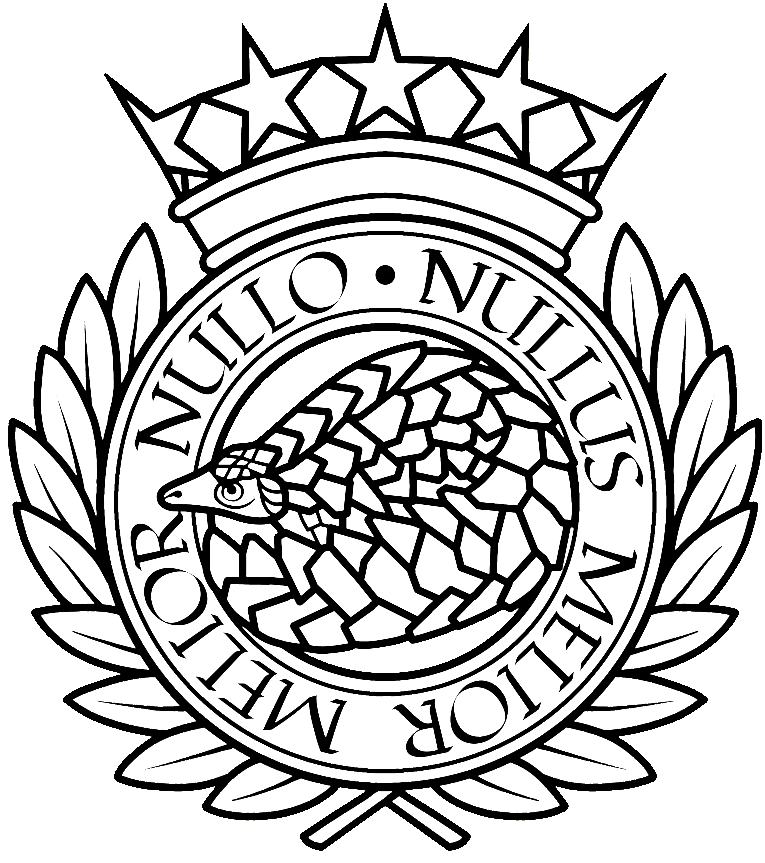
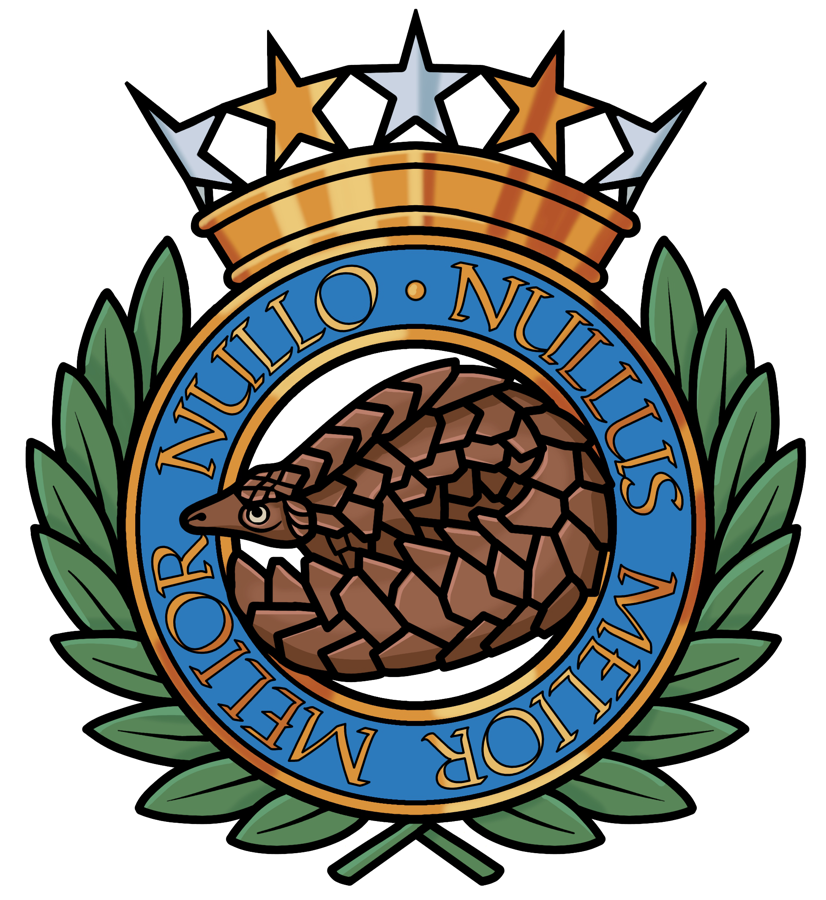
(l-r) 1] David Robert Wooten/Terrie Smith; 2-3] Denis Sirotnin; 4-5] Brian Abshier
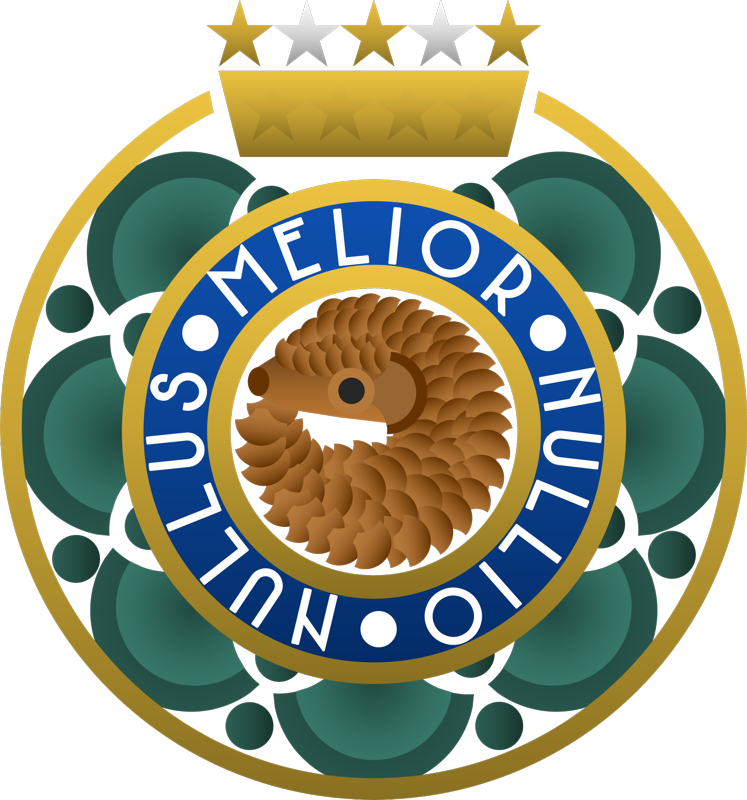
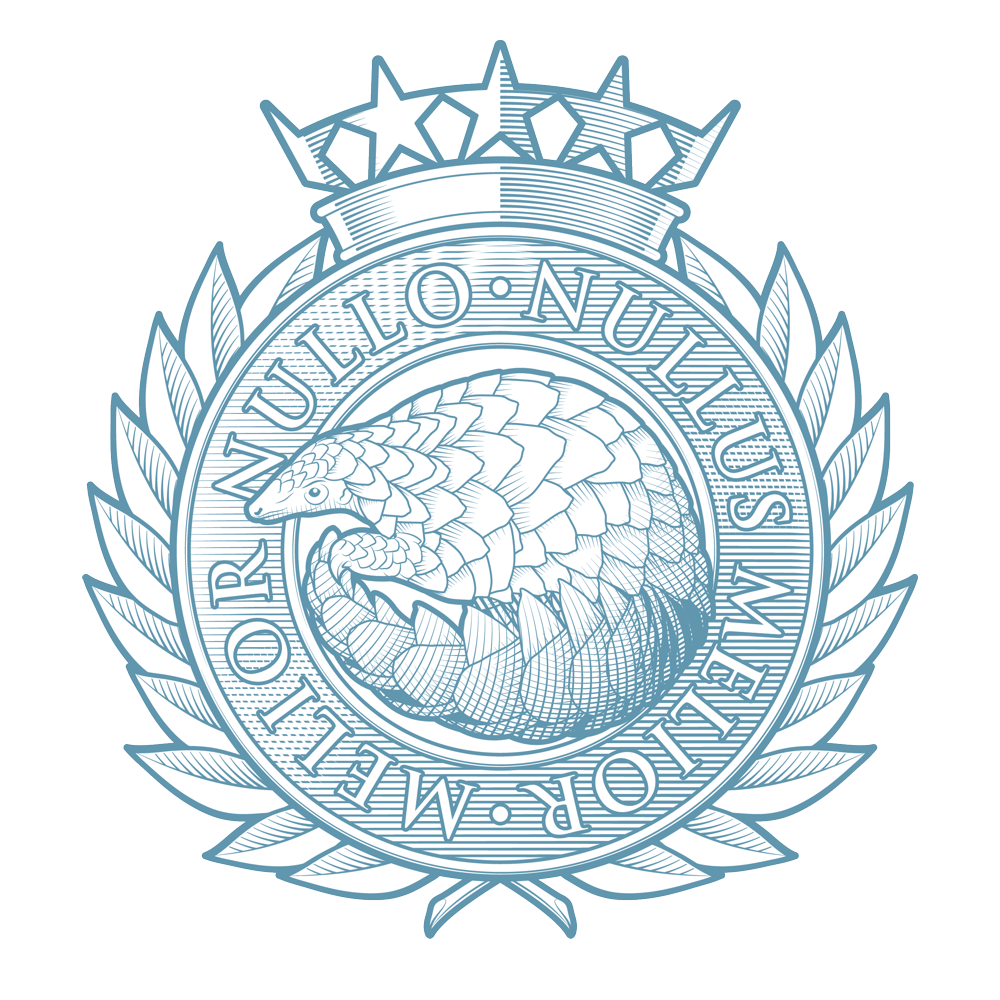
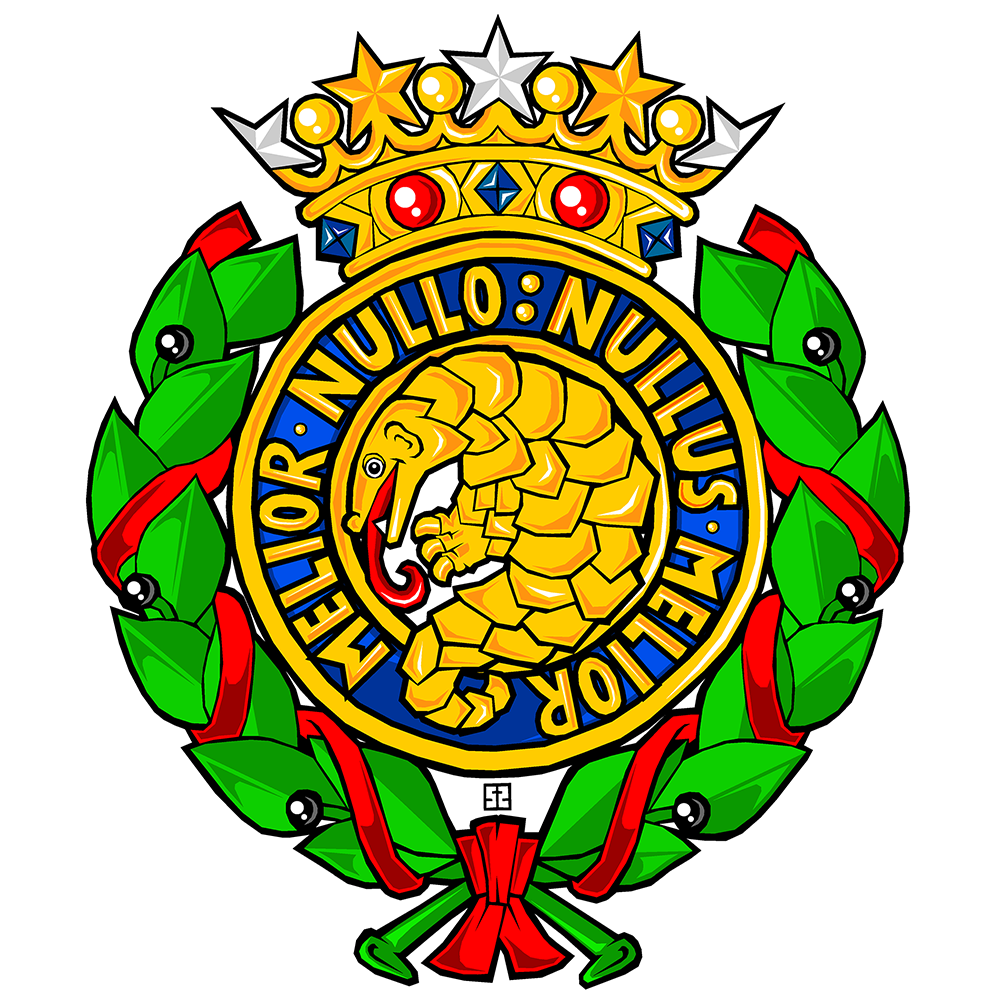
(l-r) 1] Edward Teather; 2] Quentin Peacock; 3] Sivane Saray
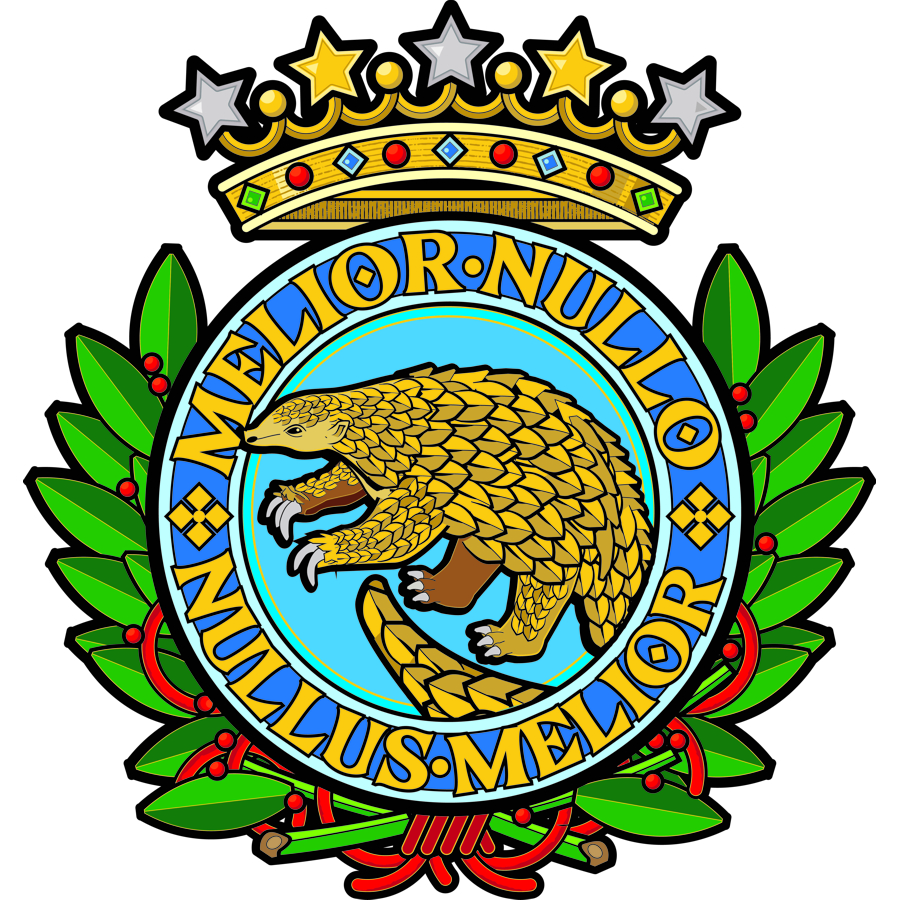
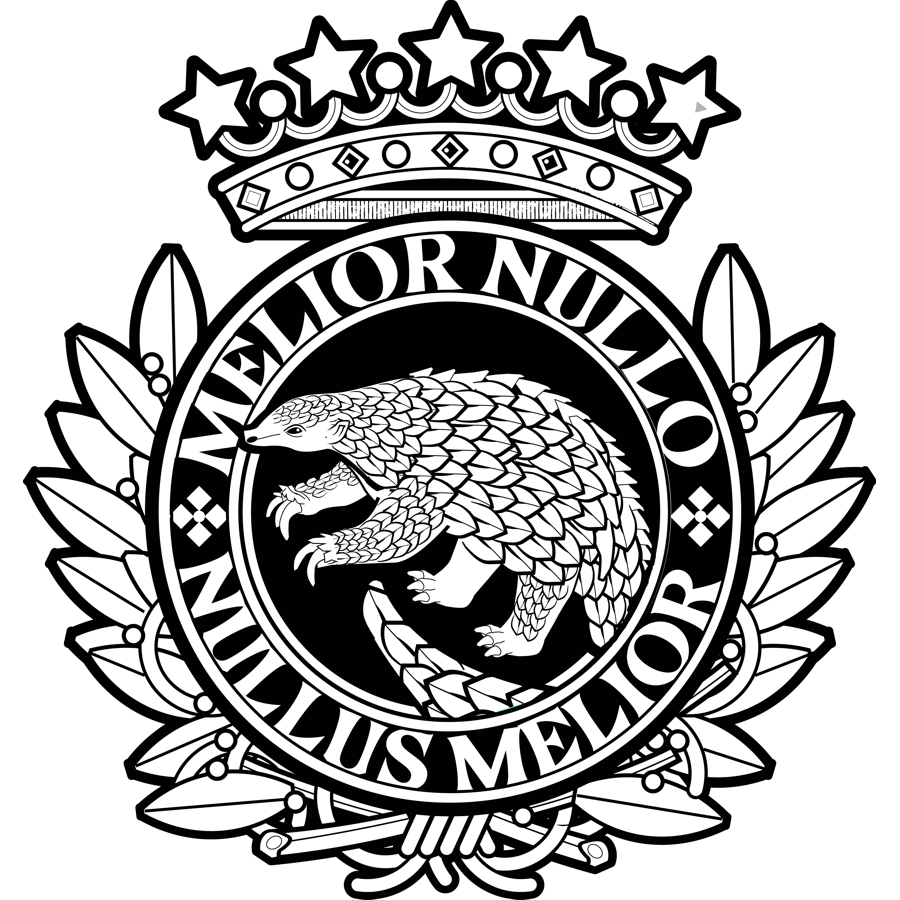
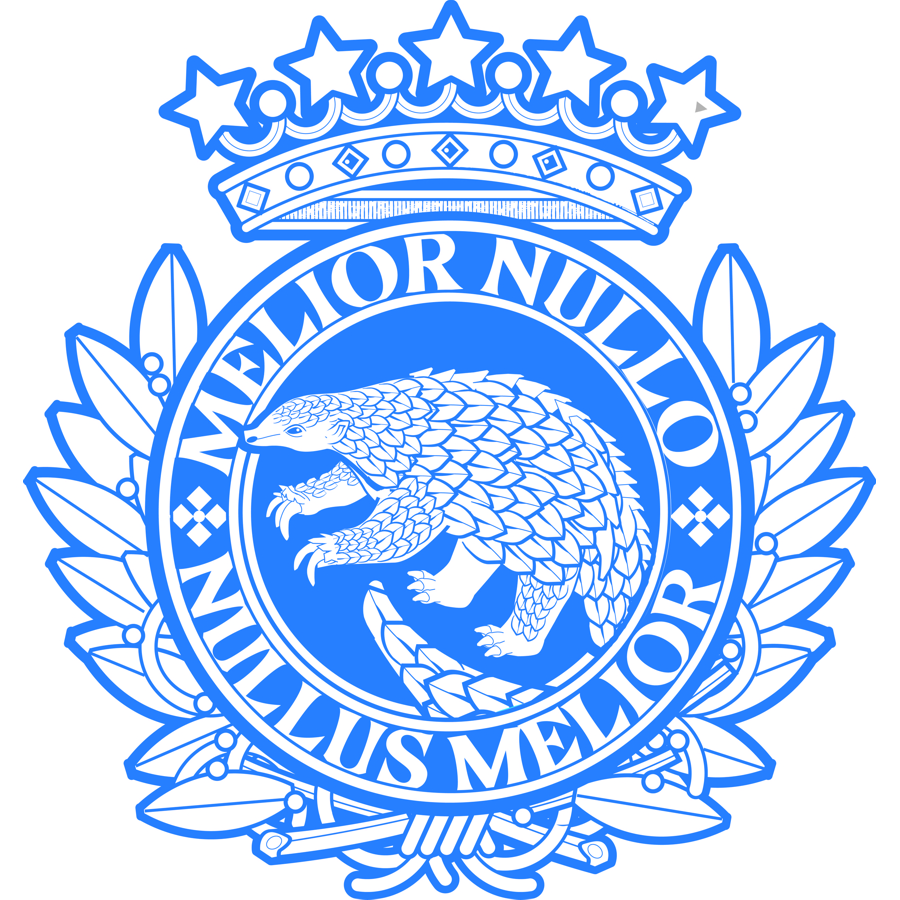
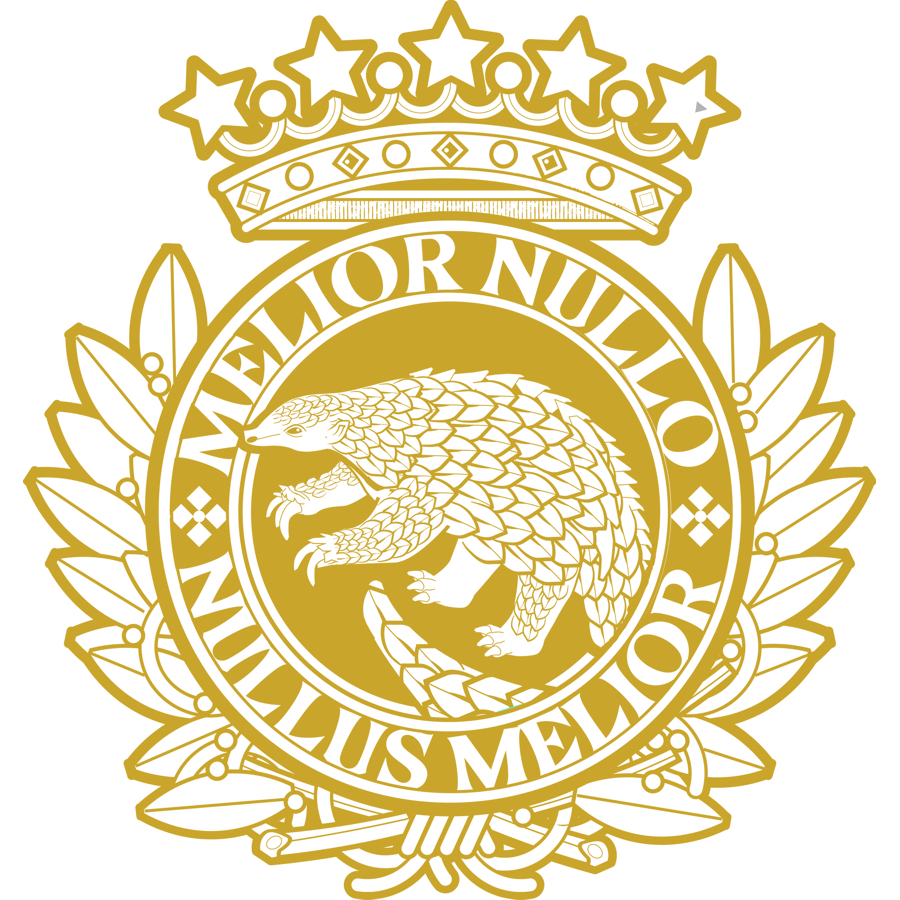
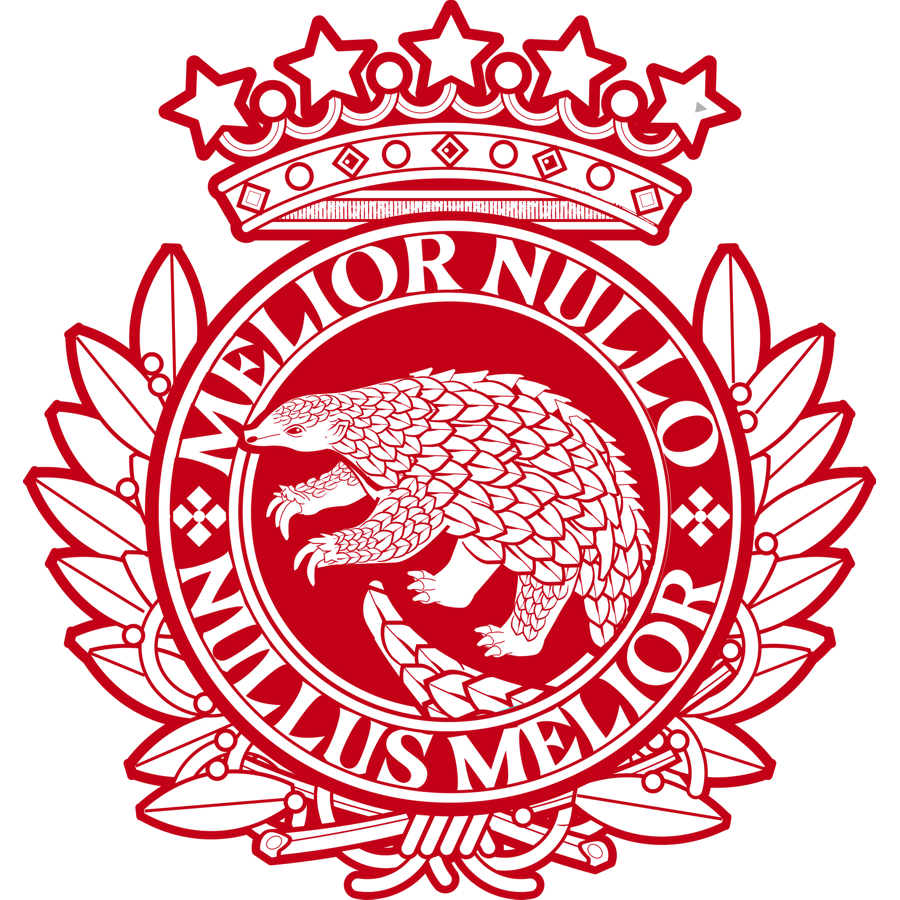
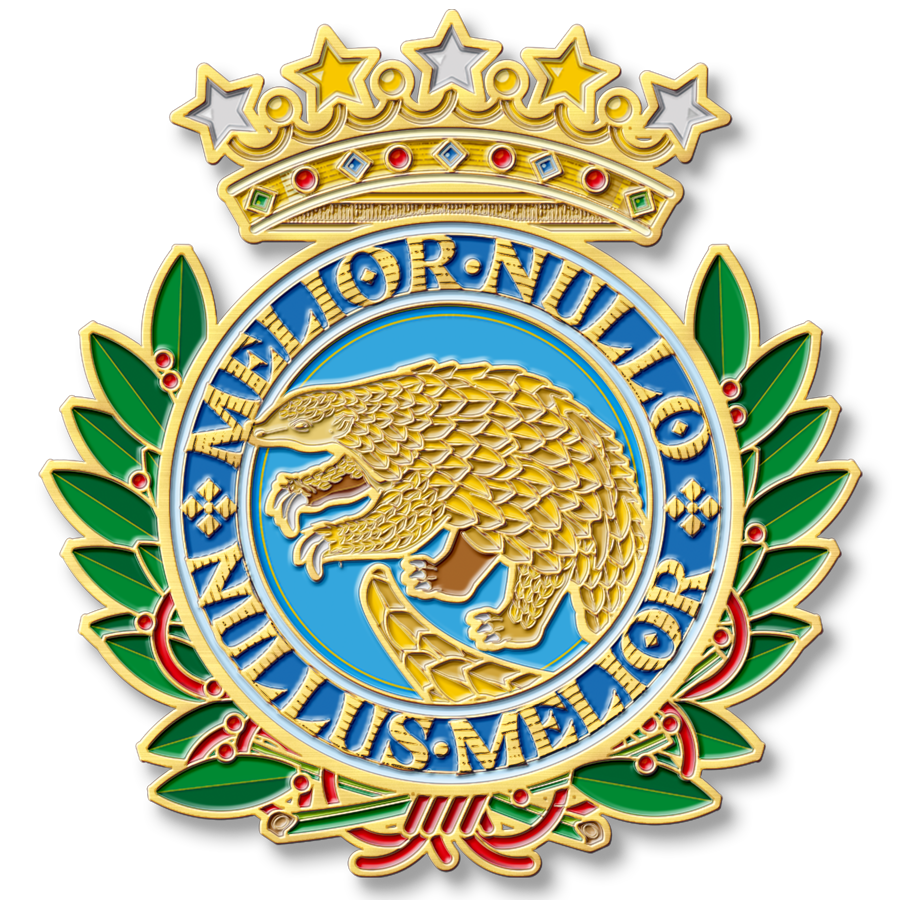
All by Fray Rafael Nieto
For additional information on any of the artists shown above, click the Heraldry link above and drop down to Heraldic Artists.
